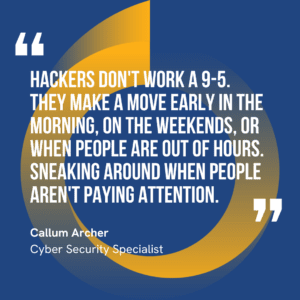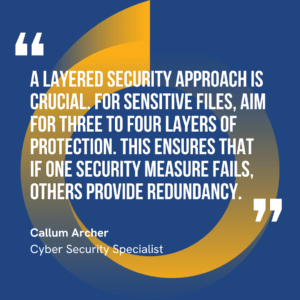Is your cyber security tech enough to withstand an advanced cyberattack? Firewalls, antivirus software, and sophisticated detection systems – they’re all touted as the ultimate shield against cyber threats, but are they enough?
At Babble, we understand the pressures you’re under. We’ve helped thousands of customers like you who are juggling multiple priorities, tight budgets, and wanting a trusted partner to guide them through the complexities of cyber security. It’s tempting to think of cyber security as a purely technical issue that can be solved by buying and implementing tools.
In this article, we will explore why relying purely on technology (no matter how fancy or sophisticated) isn’t enough to protect you. We’ll show how a holistic approach is needed for your business to achieve true cyber resilience.
The Holistic Security Model

 Cyber security is more than just a tech issue, it’s a business issue that needs a comprehensive solution. This often requires a shift in mindset – one that recognises how people, processes, and technology work together.
Cyber security is more than just a tech issue, it’s a business issue that needs a comprehensive solution. This often requires a shift in mindset – one that recognises how people, processes, and technology work together.
This means taking the time to understand where their strengths and weaknesses lie and implementing regular reviews of your security procedures, so that you are continuing to strengthen your cyber posture.
The Limitations of Technology-Only in Cyber Security
While technology is undoubtedly a critical component of any cyber security strategy, we need to recognise its limitations. It’s not a magic fix but more like a piece of the puzzle. No matter how advanced the technology, if your organisation isn’t skilled enough to utilise it, then it is ineffective.
Investing in technology only for your cyber security needs can lead to:
 Over-reliance: Being overly dependent on a single type of defence, like an antivirus or firewall, creates significant vulnerabilities. If that specific tool fails, your entire system becomes exposed.
Over-reliance: Being overly dependent on a single type of defence, like an antivirus or firewall, creates significant vulnerabilities. If that specific tool fails, your entire system becomes exposed.
Lack of Agility: Cyber threats are constantly changing and evolving, while technology can quickly become outdated. A tool that worked effectively three years ago might not be sufficient today.
Lack of Expertise and Coverage: Many SMBs lack the internal expertise to effectively manage these tools. Hackers don’t work a 9-to-5 schedule. They strike during off-hours when your team may not be actively monitoring, leaving you vulnerable. This means that you need more than just tools; you need round-the-clock monitoring and expertise.
The Human Element: Your Biggest Vulnerability and Greatest Asset
The most significant weakness in cyber security often isn’t technology, but rather human behaviour. Even the most sophisticated systems can be compromised by a simple mistake, such as clicking a malicious link or sharing sensitive information with an unauthorised person.
If you’re not investing time into training your people to recognise suspicious behaviour and react in appropriate ways, your security tools will fall short. Prioritising the critical importance of human awareness and preparedness goes hand in hand with the right tools and technology. Here are some ways that you can do this:
- Prioritise Cyber Security Training: Invest in regular and engaging training programs that cover topics like phishing identification, password security, data handling best practices, and social engineering tactics.
- Implement a Strong Security Awareness Program: Foster a culture of security awareness through regular communication, phishing simulations, and rewards for employees who report suspicious activity.
- Lead by Example: Encourage leaders to show their commitment to cyber security protocols and promoting a security-conscious culture throughout the company.
- Conduct Regular Security Audits: Regularly assessing employee awareness and knowledge through engaging quizzes and security audits to help identify where knowledge gaps appear and areas for improvement. A great example of this is Mimecast’s Human-centric User Awareness Training.

Beyond Training: Building Your Culture of Cyber Resilience
It should become clearer that cyber security isn’t just one thing; it’s about moving beyond simply ticking boxes and working towards creating a team that knows how to mitigate an attack before it occurs. This is often referred to as building a culture of cyber resilience. According to Opentext, cyber resilience is described as “the ability of an organisation to anticipate, withstand, recover from, and adapt to adverse conditions, stresses, attacks, or compromises on systems that use or are enabled by cyber resources.”
Here are some ways you can build a culture of cyber resilience:
- Proactive Testing: It’s vital to proactively test your defences and not just react to attacks. Techniques such as penetration testing, vulnerability scanning, and attack simulations are all important elements in understanding how resilient your business is.
- Team Dynamics: Rather than focusing on individuals, think about your teams and their strengths and weaknesses. A strong security culture empowers employees to report suspicious activity without fear, promoting collaboration, and continuous improvement.
- Realistic Scenarios: Move beyond traditional training exercises and create realistic scenarios that simulate real-world threats. This will reveal gaps in your team’s preparedness.
- Managed Security Services: Consider managed detection and response (MDR) services for 24/7 coverage to monitor your tools. Virtual CISO or consultancy services can also provide a non-biased third-party perspective.
Securing Your Business for the Future
The misconception that technology alone is enough to protect your business is no longer a viable approach. To truly strengthen your cyber resilience, you need to reassess your current strategy and acknowledge that relying solely on tech leaves significant gaps. This means investing in people, processes, and a strong security culture across all levels of the organisation.
 This mindset needs to be embedded from the top down, with leadership championing security and providing adequate resources not just for tech, but also for ongoing employee training and awareness programs.
This mindset needs to be embedded from the top down, with leadership championing security and providing adequate resources not just for tech, but also for ongoing employee training and awareness programs.
A strong security culture involves a shared understanding of expected behaviours; and shifting from a technology-centric view to a holistic view means moving away from the “checkbox mentality” and building a team that knows how to mitigate an attack before it occurs.
Remember that the most secure organisations are those that recognise the need for both cutting-edge technology and an informed, engaged workforce. At Babble, we offer a free security health check to help you with this. By taking the time to have an honest conversation about your current cyber posture we can work together to build a cyber security solution that is right for you.
Read our article that covers What Goes into a Cyber Security Budget to get a better understanding of the costs involved in a holistic approach to your cyber security solution.




